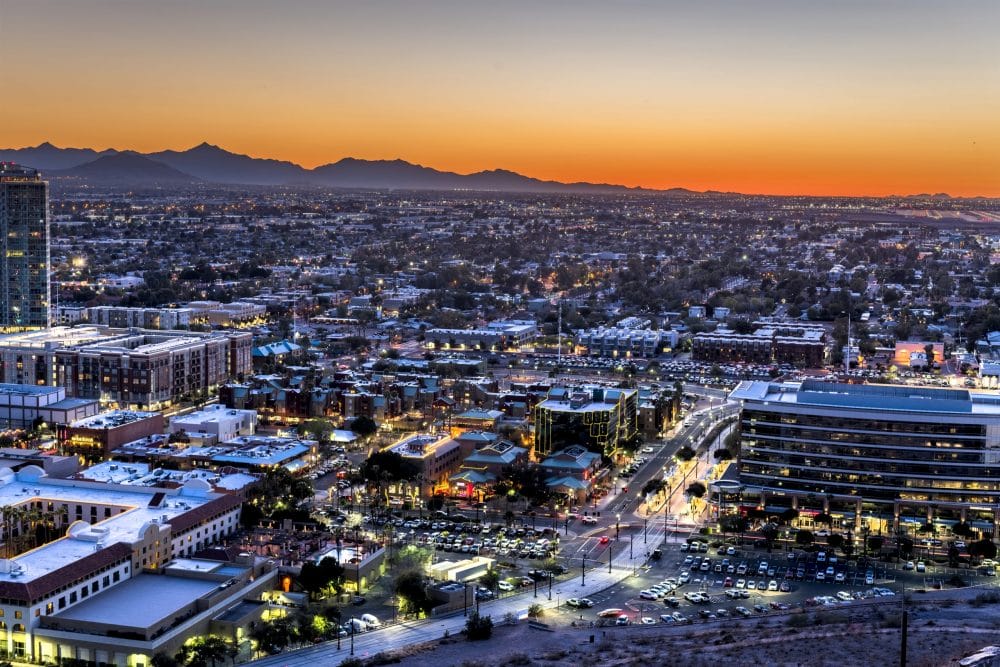By George Packer | The Atlantic
No one knows why the Hohokam Indians vanished. They had carved hundreds of miles of canals in the Sonoran Desert with stone tools and channeled the waters of the Salt and Gila Rivers to irrigate their crops for a thousand years until, in the middle of the 15th century, because of social conflict or climate change—drought, floods—their technology became obsolete, their civilization collapsed, and the Hohokam scattered. Four hundred years later, when white settlers reached the territory of southern Arizona, they found the ruins of abandoned canals, cleared them out with shovels, and built crude weirs of trees and rocks across the Salt River to push water back into the desert. Aware of a lost civilization in the Valley, they named the new settlement Phoenix.
It grew around water. In 1911, Theodore Roosevelt stood on the steps of the Tempe Normal School, which, half a century later, would become Arizona State University, and declared that the soaring dam just completed in the Superstition Mountains upstream, established during his presidency and named after him, would provide enough water to allow 100,000 people to live in the Valley. There are now 5 million.
The Valley is one of the fastest-growing regions in America, where a developer decided to put a city of the future on a piece of virgin desert miles from anything. At night, from the air, the Phoenix metroplex looks like a glittering alien craft that has landed where the Earth is flat and wide enough to host it. The street grids and subdivisions spreading across retired farmland end only when they’re stopped by the borders of a tribal reservation or the dark folds of mountains, some of them surrounded on all sides by sprawl.








